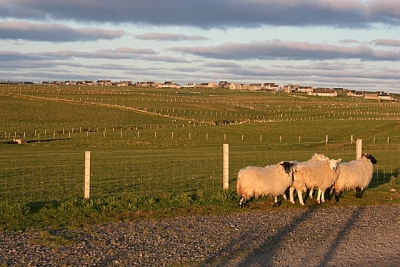8th July 2019

What does the word “croft” bring to mind? Some will picture a house, perhaps a one and a half storey, whitewashed building of a traditional design in a West Highland or Island setting. For others, it is a small farm, perhaps in an upland area. For the lawyer, a “Croft” is defined by the Crofting Acts.
It used to be (fairly) simple.
In the Crofters Holdings (Scotland) Act 1886, a “crofter” was a “person who at the passing of this Act is tenant of a holding from year to year, who resides on his holding, the annual rent of which does not exceed thirty pounds in money, and which is situated in a crofting parish, and the successors of such person in the holding, being his heirs or legatees”. The same Act defines a “holding” as “any piece of land held by a crofter, consisting of arable or pasture land, or of land partly arable and partly pasture and which has been occupied and used as arable or pasture land (whether such pasture land is held by the crofter alone, or in common with others) immediately preceding the passing of this Act, including the site of his dwelling-house and any offices or other conveniences connected therewith, but does not include garden ground only, appurtenant to a house”. So a crofter was someone with a holding or croft and a holding was land occupied by a crofter. Easy!
In practice, this meant a small area of agricultural land (with or without a house), held on a tenancy and situated in one of the seven Crofting Counties: Argyll, Caithness, Inverness, Orkney, Ross and Cromarty, Sutherland and Zetland (Shetland).
Over the years the definition changed and for a period last century “croft” and crofter” ceased to have any legal meaning. The terms were restore by the Crofters (Scotland ) Act 1955 and the majority of crofts which exist today are crofts simply because they met the definition in 1955.
What is a croft (for legal purposes) is now governed by s3(1) of the Crofters (Scotland) Act 1993. This contains no less than nine separate headings for the meaning of “croft”. The requirement that a croft is held under a tenancy has gone. Crofters gained the right to buy their land in 1976 and many have exercised that right in subsequent years. Gone too is the requirement that the land must be situated in one of the Crofting Counties. Since the passing of the Crofting Reform etc. Act 2007, the Scottish Ministers have the power (with the approval of the Scottish Parliament) to designate areas outside the traditional Crofting Counties as croft land. In 2010, they used this power to designate parts of Moray and Nairn, Bute, Arran and Great and Little Cumbrae as crofting areas. The extent to which crofts will be created in these areas has yet to be seen.
The link to agriculture has also been lost, at least in part. Since the Crofters Reform (Scotland) Act 2010 came into force, a crofter (whether they are a tenant or own their croft) must cultivate their ground or put it to another purposeful use. Cultivation includes the keeping and breeding of livestock, poultry or bees, horticulture, the growing of fruit, vegetables and the like and the planting of trees or woodland. A “purposeful use” is any planned or managed use which does not adversely affect the croft, the public interest, the interests of the landlord or owner, or the use of adjacent land. It also requires the consent of the crofter’s landlord or the Crofting Commission. This gives the crofter wide scope for use of their ground. Tourist related activities are common and renewable energy projects are often seen.
So, a croft may (or may not) be land used for agriculture, it may (or may not) be tenanted, it may (or may not) be in the Crofting Counties and it may (or may not) have a house on it. Simple?
In practice, it is (usually) pretty straightforward to judge whether a croft is truly a croft in law. It may not be quite so easy to identify if a particular area of ground is, or was, part of a croft, but that is another matter.
What is a croft? Perhaps the old joke is right after all — a croft is just a small piece of ground hedged round by legislation.
Call 01463 221727 or email legal@munronoble.com
